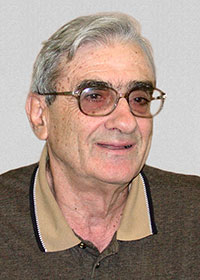Research Interests
We have studied the structure of the proton and neutron using a relativistic quark-parton model in the nucleon rest frame. The results provide an understanding of deep inelastic scattering and polarization experiments. Questions addressed are the origin of the spin of the nucleons, and the relation of deep inelastic scattering measurements to static properties of nucleons. Properties (masses, magnetic moments, decays) of baryons are calculated in a quark model that does not impose internal symmetries, but achieves the appearance of symmetry where it is appropriate. A good simultaneous fit to baryon magnetic moments and beta decay constants is achieved with the inclusion of a relatively large pion component of baryon wave functions. We have been working on some long-standing fundamental problems in special relativity, and have resolved paradoxes in the interpretation of consequences of special relativity: the `Trouton-Noble' experiment, the `right angle paradox', `Bell's spaceships paradox', and the `Sears paradox'. We are developing methods to treat the acceleration and collisions of rigid bodies in special relativity. We have clarified issues in the definition and calculation of electromagnetic energy and momentum, and shown the absence of `hidden momentum' if the production of electromagnetic momentum is treated consistently. We recently resolved a controversy about the correct form for the force on a magnetic dipole, and also showed that a Lorentz transformation on a neutral current loop does not produce a charged current loop with an electric dipole moment.
Publications: ORCID link

